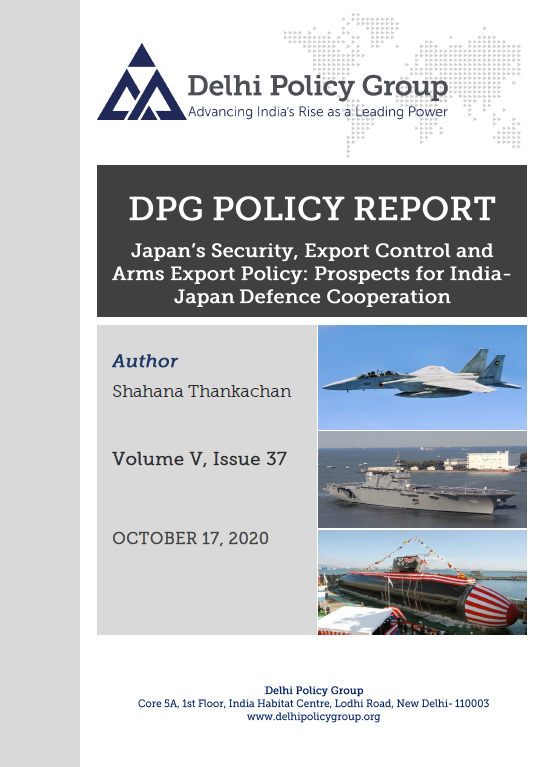Japan’s Security, Export Control and Arms Export Policy: Prospects for India-Japan Defence Cooperation
On April 1, 2014, the Government of Japan issued “The Three Principles of Transfer of Defence Equipment and Technology”. These principles lifted the ban on arms exports that Japan had imposed on itself in 1967 and 1976. The ban introduced in 1967 was destination-based, while the ban in 1976 placed outright curbs on arms exports. This paper is an attempt to understand the contours of these policies and to measure the extent of both the restrictions on export prior to 2014 and the changes introduced thereafter. The report also identifies the extent to which the bans of 1967 and 1976, and the lifting of the ban in 2014, were implemented. In addition, the paper tries to provide a detailed understanding of the legal basis of security, export control and arms export licensing in Japan, so as to provide an insight into the structural challenges facing Japan’s defence industry and its export.
The report also provides some possible solutions to overcoming the challenges facing Japan as the latest entrant in the international weapons market. The larger aim is to identify the opportunities for strengthening India-Japan defence co-operation. The two countries can greatly benefit each other through such cooperation, as India is the second-largest arms importer in the world, while the Japanese defence industry faces an existential crisis unless it can accelerate its exports substantially.
The study finds that the root of the problem facing Japan’s defence exports is the prevalent normative constraint imposed by its pacifist outlook. This pervades the export policy, the licensing regime, the legal framework, the mindset of the government, the bureaucracy, the industry players and the public in general. The fear of being branded as a “merchant of death” continues to prevent Japanese industry from increasing the share of arms in their manufacturing portfolio. However, the report also demonstrates that loopholes in policy and legal frameworks have allowed Japan to facilitate dual-use exports. India’s greatest opportunity in the short-term lies in utilising Japan’s dual-use export potential.
Apart from normative constraints, Japan’s defence industry faces several other challenges. As a relatively new entrant in the international market, Japanese exporters are inexperienced and Japanese products lack the advantages that arise from being combat tested. Moreover, the lack of joint production has prevented Japanese products from achieving synergies which are prevalent in jointly produced advanced new-generation weapons.
The Japanese defence export arena is still at a very nascent stage, and in the long term, has huge growth potential. Japan’s new Prime Minister Yoshihide Suga may soon sign an agreement with Vietnam that will allow Tokyo to export defence equipment and technology to Hanoi. India and Japan must also be ready to identify the potential of such new opportunities and use it strategically to strengthen the bilateral relationships in the current uncertain geopolitical environment of the Indo-Pacific.



